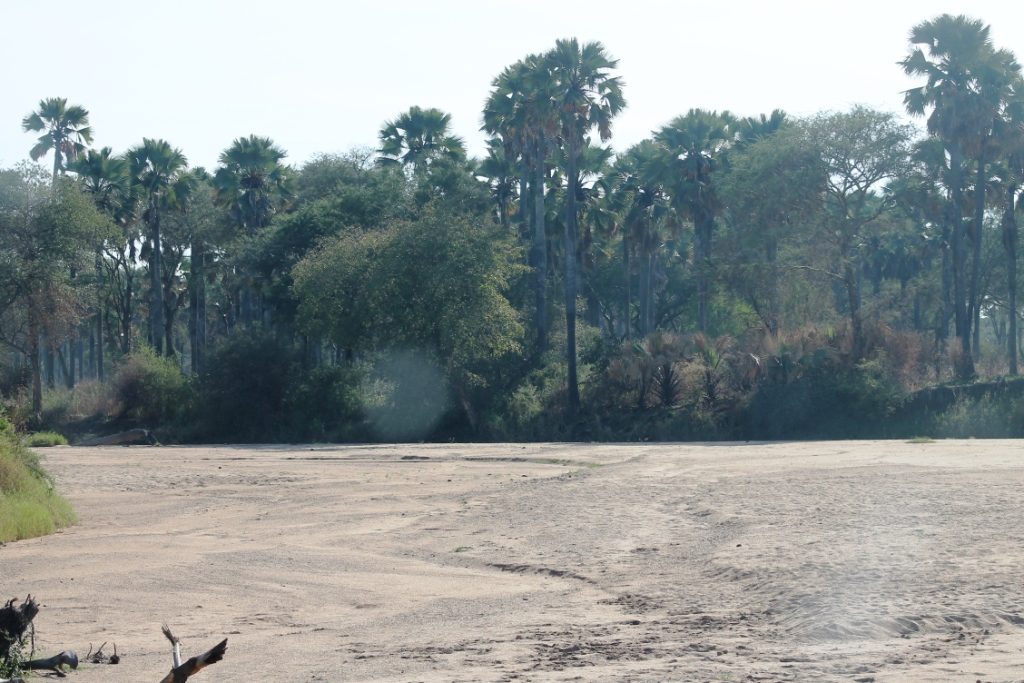Kidepo Valley National Park is truly wilderness park; dry, hot and isolated, yet spectacular, magnificent and virgin, waiting to be discovered. Traversed by large sand rivers the park is renowned for its distinctive composition of wild game co-existing with the dry mountain forests, open savanna and hilltops capped by rock Kopjes with unique culture people, the Karamjong, who have still preserved their old native traditional ways of life up to date. BOOK NOW
Kidepo Valley National Park consists of two valleys; Narus Valley and Kidepo Valley
The Narus Valley
The Narus Valley, which means ‘muddy area’ among the locals, was also formally known as the water provision point. This area that was always scrambled for by the native tribes, the Napore and the Mening of South Sudan during the dry season, today serves as the heart of tourism due to the presence of water throughout the year thus attracting a lot of wild animals. This valley provides permanent water, and through most of the year its wildlife gathers here. Therefore, this area is properly supplied with game tracks, having 4 loop circuits that explore the valley close to Apoka.

Kidepo sand river
The Nurus Valley is supplied by Nurus River. The Narus River flows in a northwesterly direction through the southern portion of Kidepo Valley National Park in northern Uganda, joining the larger Kidepo River near Komoloich, about 13 kilometres (8.1 mi) after entering Eastern Equatoria state of South Sudan
The Kidepo Valley
The Kidepo valley where the park gets its name is known for the borassus tree plantations stretching approximately 100 meters wide naturally planted by elephant droppings through the years. These trees also worked as the source of food during food crisis in the seventeenth and eighteenth century. The palm has been mostly spread by the elephant whereby; they do feed on the fruit of the tree and later release them to the ground which later germinates into the palm trees making the elephants their major seed dispersal agent. “Kidepo” means “to pick from below” and this valley was frequented by people traveling to collect fallen borassus fruits to use for fermenting when making palm beer.
The Kidepo Valley is also supplied by the Kidepo River. The Kidepo River is a seasonal river along the Kidepo Valley in the Karamoja region of Uganda, and in East Equatoria area of South Sudan.
The Narus Valley has a 40% higher mean annual precipitation than the Kidepo Valley (89 centimetres (35 in) versus 64 centimetres (25 in)). Together with a different soil structure, this creates perennial swamps and water pools along the Narus River in the middle of undulating grassland and bushland mosaic savanna, which draw plains game and are home to the Nile crocodile. Most of the Park’s tourist infrastructure is in Narus Valley, as much of the game from the more expansive northern Kidepo Valley migrates there during the dry season
In addition to Nurus and Kidepo Valley, there is another valley know as Namamukweny Valley.
“Namamukweny” is a native Napore word for which means “a place having no birds or perhaps a lonely place with very few people” – although concerning the birds, pretty the contrary is true!
This valley is greatly crowded and populated by a huge diversity of bird species for example the Eastern Paradise Whydahs, Green Wood Hoopoe, White-crested Turaco, Abyssinian Roller and the Common Bulbul, among others. It’s found in the northwest part of the park and may be accessed on foot or using a car.
